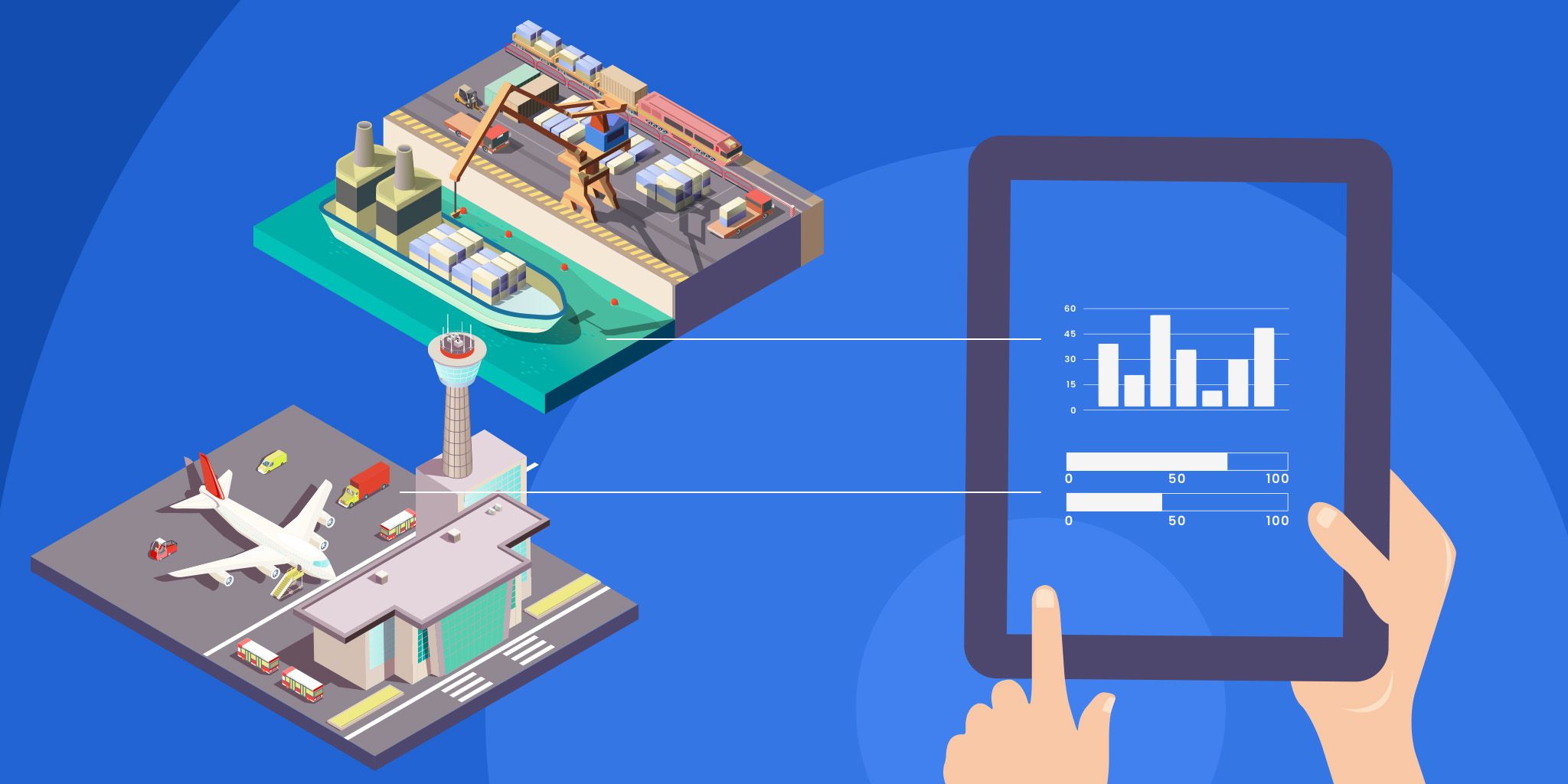Industrial IoT and the Future of Warehouses
Industrial IoT and the Future of Warehouses
- Last Updated: December 2, 2024
Guest Writer
- Last Updated: December 2, 2024



The Industrial Internet of Things (IIoT) is a critical part of today’s manufacturing, supply chain, and industry world. Current IIoT predictions estimate that the warehouse IIoT market in particular will surge in 2022. Numerous factors are contributing to the growth and revolutionizing of IIoT as a whole. In the years ahead, IIoT will continue to increase in adoption, but it may also face some challenges along the way.
'Warehouse IIoT is on track to surge in adoption in the decade ahead. Key outside factors have been crucial to sparking this growth, but experts don’t anticipate it slowing down anytime soon.' -Shannon Flynn
The Impact of Warehouse IIoT
By the end of 2022, the global IIoT market is expected to reach $176 billion in value. Looking further into the future, expert IIoT predictions estimate that the global IIoT market will hit $1 trillion by 2028. That translates to a compounded annual growth rate (CAGR) of 22.8 percent over just the next 6 years. Long-term growth in the 2030s could surge well beyond that.
Growth Opportunity: Emerging Technologies
This growth is nothing short of astounding. Additionally, emerging technologies will help advance the capabilities of warehouse IIoT technology, leading to a wave of innovation and adoption.
One key example is artificial intelligence. AI by itself is seeing rising adoption alongside the growth of warehouse IIoT, but the two together could revolutionize the industry. Experts anticipate that AI and IIoT will bolster each other in growth over the years ahead as warehouses grapple with labor shortages.
Potential Challenges: Compatibility & Cyberattacks
However, a sweeping digital revolution in the warehouse industry may fall short if a couple of key challenges are not addressed on a large scale. Warehouses will need to move on from legacy equipment that lacks the compatibility and processing capabilities needed to maximize the value of warehouse IIoT devices.
At the same time, IIoT remains vulnerable to cyberattacks, which have also been on the rise since the onset of the COVID-19 pandemic. If IIoT is going to continue to grow in the warehouse industry, warehouse managers will have to develop strong cybersecurity defenses to protect their facilities.
3 Key Drivers Behind Warehouse IIoT Growth
While many events and trends have influenced the growth of IIoT technology over the years, there are a few key drivers that are powering this current surge in warehouse IIoT adoption. These factors are on track to change the workforce and supply chain forever, indicating long-term growth potential for warehouse IIoT. The key drivers outlined below are fast-tracking growth in the IIoT industry.
The Supply Chain Crisis
The supply chain crisis has put an immense strain on warehouses around the world. Between a historically low supply of vacant warehouses and persistent inventory challenges, warehouses have been forced to evolve over the past couple of years.
Available warehouse space has dropped to record lows, especially in key regions, such as the area surrounding Southern California’s two main ports. With little opportunity to expand to new warehouse space, warehouse managers have had to implement new technologies to maximize the value and functionality of the space they do have.
Similarly, inventory management has become a greater challenge in the midst of the supply chain crisis. Warehouses need to operate at maximum efficiency and optimize inventory management in order to keep up. IIoT has an important role to play in meeting these goals.
The Labor Shortage
Labor shortages have become a challenge in virtually every industry. As of late 2021, over 10 million jobs remained unfilled in the U.S. while millions of Americans continued to quit their jobs every month. This left many warehouses dealing with a supply chain crisis and a shortage of employees to help manage it.
It is no surprise that warehouse IIoT adoption increased in response to the labor shortage. IIoT devices allow warehouses to operate at new heights of efficiency, with data backing up optimization. While IIoT devices cannot replace valuable employees, they can help remaining employees perform as effectively as possible.
Widespread Digitalization
Finally, it is important to note the rise of digitalization over recent years, even prior to the COVID-19 pandemic and consequential supply chain crisis. Digitalization has been on the horizon for warehouses for many years. Recently, other factors have simply reignited the digital transformation trend.
With widespread digitalization reaching more and more warehouses, adoption of IIoT tech has risen. Warehouse managers want to ensure that their facilities are operating as intelligently as possible. These digital tools offer invaluable cutting-edge benefits, as well, which have become especially useful recently.
For example, organizations have discovered the advantages of digitizing inventory management, including improved inventory control, automation opportunities, and greater productivity and efficiency.
IIoT Warehouse Predictions for the Decade Ahead
Warehouse IIoT is on track to surge in adoption in the decade ahead. The growth that IIoT is experiencing is incredible, even within the tech industry. Key outside factors have been crucial to sparking this growth, but experts don’t anticipate it slowing down anytime soon.
The 2020s and 2030s will see the emergence of a wave of tech-driven warehouses, capable of operating at cutting-edge levels of efficiency and productivity. The warehouse industry has changed forever in recent years, and warehouse IIoT is helping to propel it into the future.
The Most Comprehensive IoT Newsletter for Enterprises
Showcasing the highest-quality content, resources, news, and insights from the world of the Internet of Things. Subscribe to remain informed and up-to-date.
New Podcast Episode

Moving Past the Pilot Phase in IoT and AI
Related Articles





